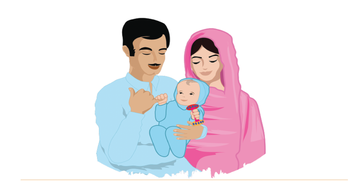Practice 21: Positive Disciplining
Make sure that children are brought up with warmth, care, kind words, gentle guidance and positive discipline from parents and family members.
A,B,Cs
Ask
- Ask them what they do when the child does something wrong or annoys them?
- Ask how children are disciplined in the family.
- Ask why they use that form of discipline?
Brainstorm
- Acknowledge the use of positive discipline methods and appreciate parents who speak to their children with kind words.
- Discuss why parents may use the methods of discipline they mentioned.
- Discuss the effect of such methods on children.
Coach
- Explain what positive discipline is and provide examples of the methods.
- Explain to them the benefits of positive discipline and the use of positive words on children’s development.
Key Messages
- Corporal Punishment/Physical Abuse:
- Positive discipline helps a child learn self-control and with that comes self-esteem and confidence.
- Rather than use corporal punishment to discipline the children, let us use positive discipline.
- Positive discipline is a non-violent, continuous and consistent process of guiding a child to behave in a manner that is acceptable.
- Positive discipline is about teaching children right from wrong, including setting limits and following through with a child.
- Verbal Abuse:
- Parents who tell their children that they are dumb, bad etc raise children to think they are those things and they act as such.
- Verbal abuse causes children to feel afraid and less confident.
- Verbal abuse affects the emotions of children and also leads to health problems of children.
- Let's build our children up with our words, even when they make mistakes.
- Let us correct our children with patience.
- Let us correct our children without hurting them.
- There is always another way to correct a child.
Average Rating: ☆ ☆ ☆ ☆ ☆ (0 reviews)



